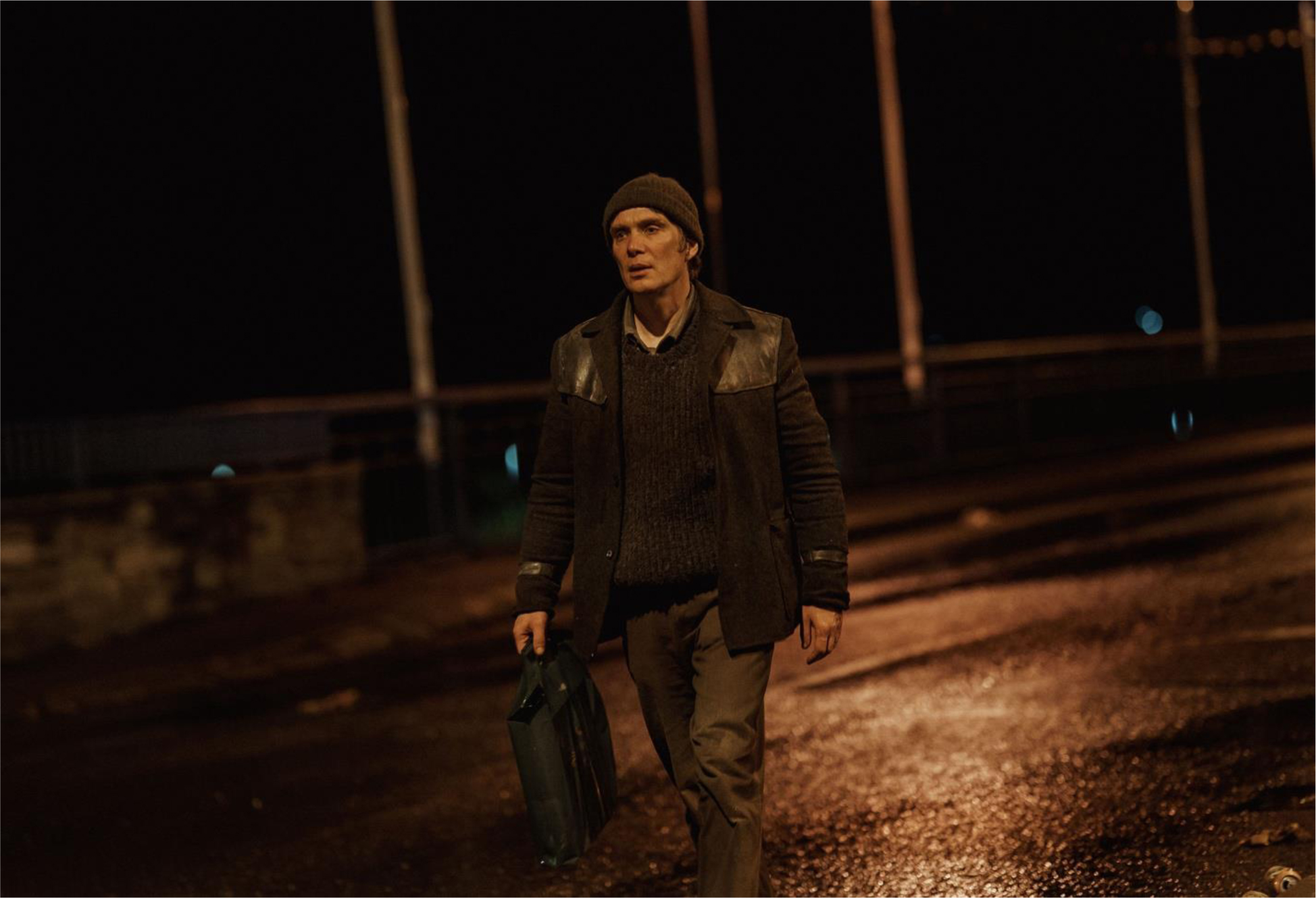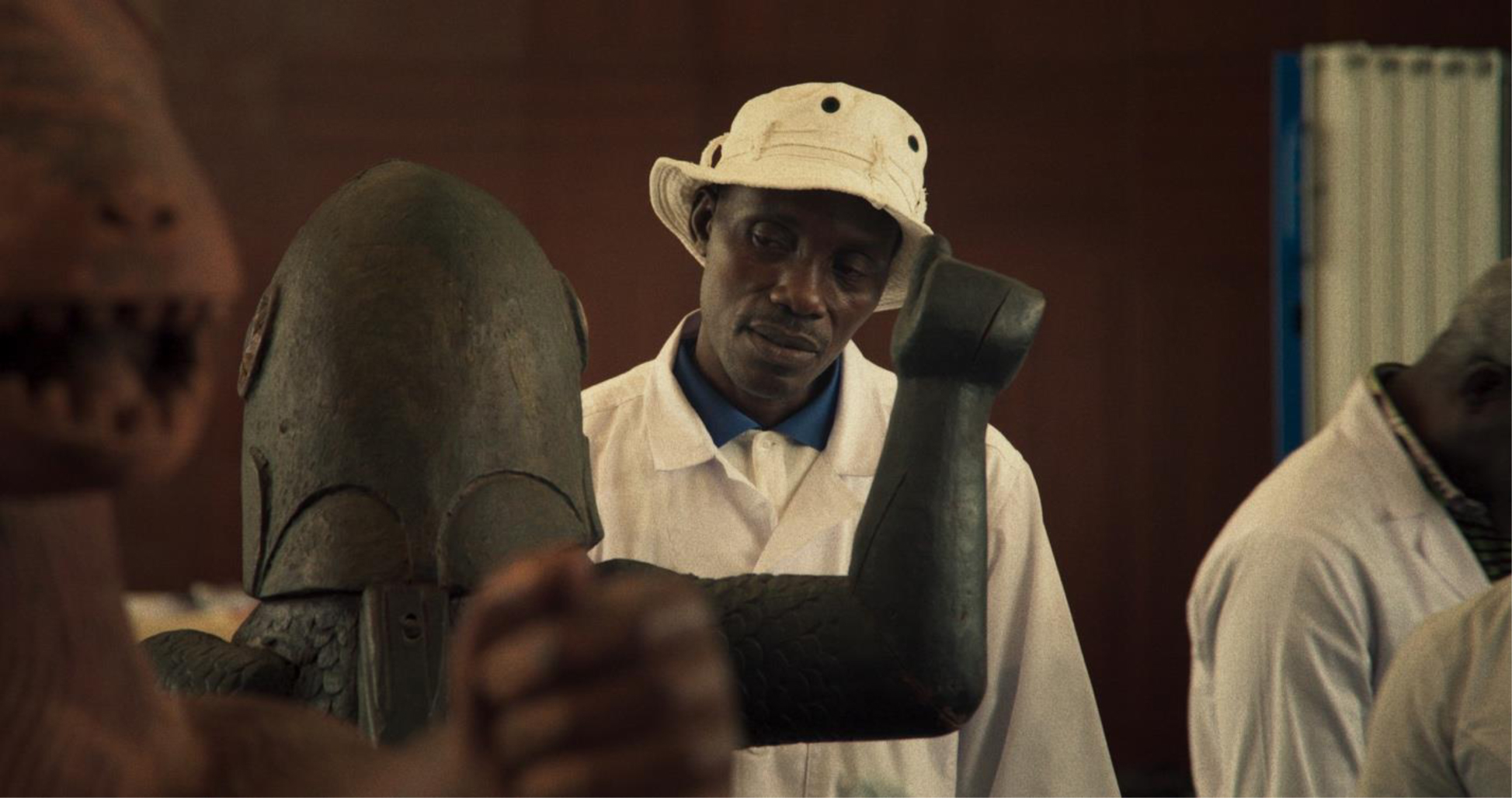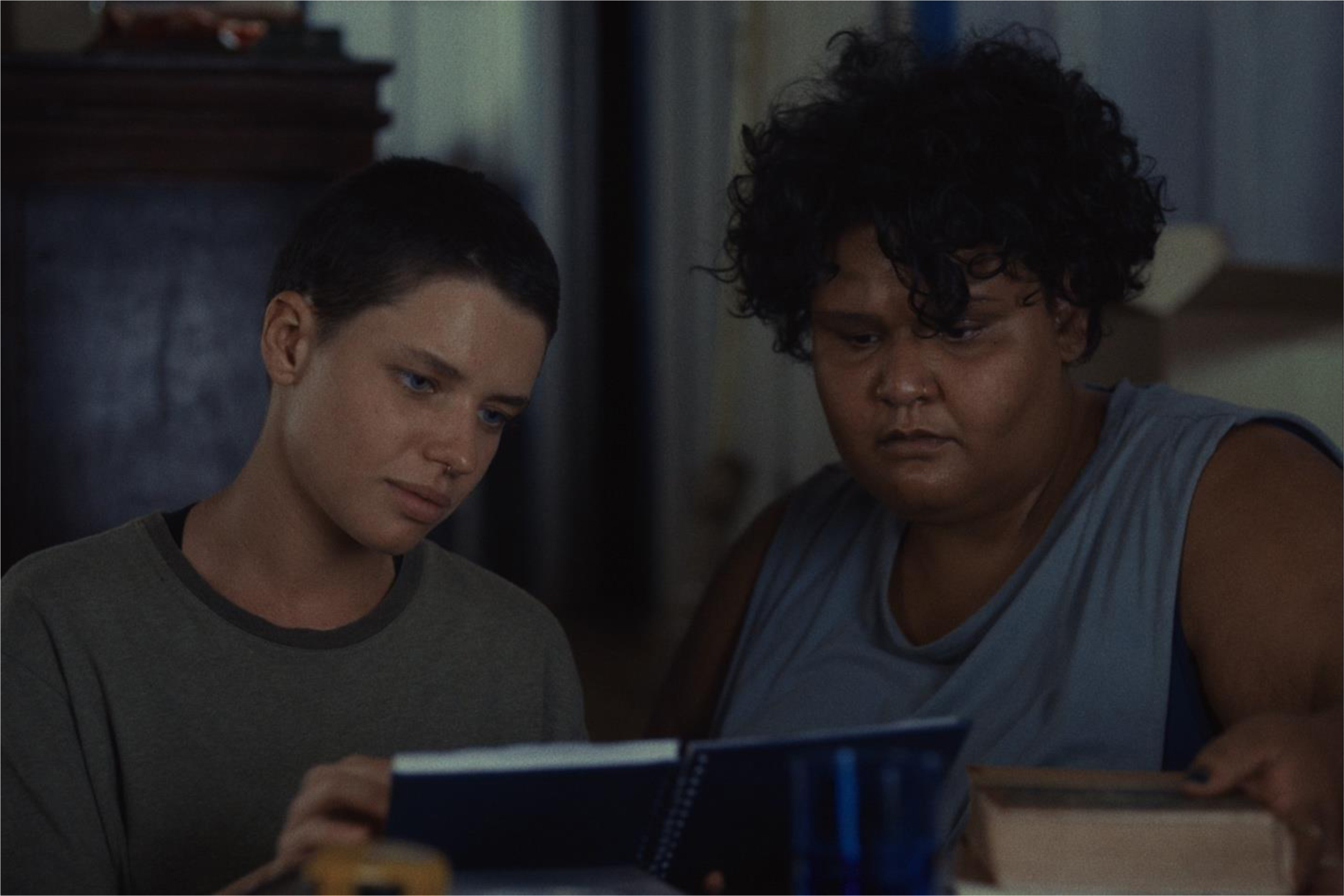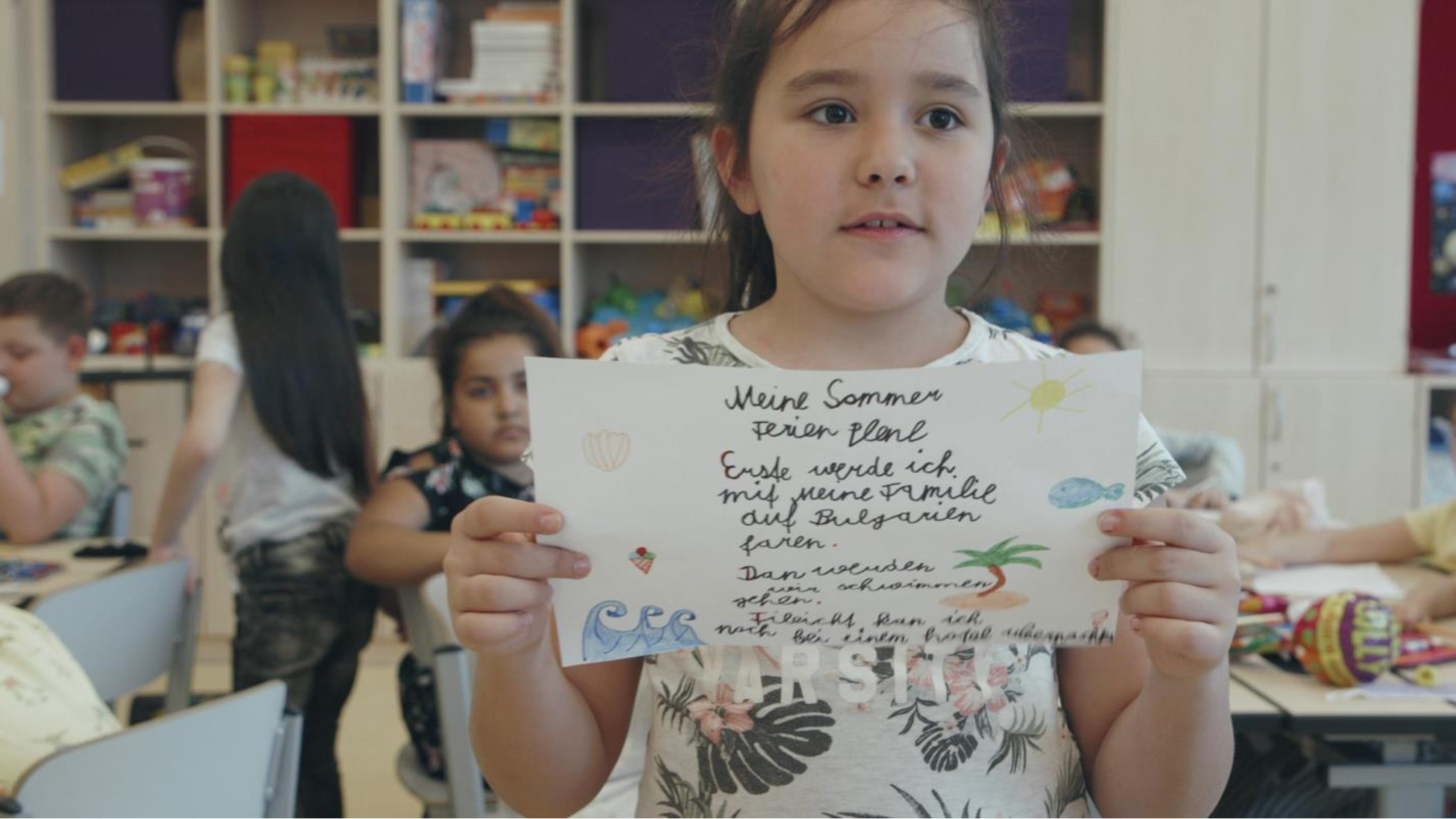The 2024 edition of the Berlin Film Festival was met with even more anticipation than usual for it was to be the last under the dual directorship of Marïette Rissenbeek and Carlo Chatrian. After Rissenbeek had announced in March ‘23 that she would step down after this year’s festival, the governing body of the Berlinale did not give Carlo Chatrian an opportunity to serve a second mandate—a decision that met with widespread outrage and prompted more than 400 filmmakers to sign a petition demanding a prolongation of Chatrian’s contract, including the likes of Martin Scorsese, Béla Tarr, Kristen Stewart, and Margarethe von Trotta. Yet these protests were ignored, for in mid-December, Claudia Roth, Germany’s culture commissioner, announced that Tricia Tuttle would assume directorship of the festival this coming April. Having managed the BFI London Film Festival for five years, Tuttle comes with the reputation of being well-connected and having a close relationship with her audiences. She will certainly need stronger political support than what her predecessors were given to face the considerable challenges coming her way. Among them are the tight budget of the city of Berlin, the greatly reduced number of cinemas around Potsdamerplatz, and that hub’s general state of disrepair and unwelcoming athmosphere.
Chatrian’s ouster has to be seen as a “blunt commerce-over-cinema redirection” of the festival, as B. Ruby Rich commented.1 And this redirection is only one of several big changes the film scene of the German capital is currently facing. Later this year, the prestigious cinema Arsenal, which hosts the Forum sidebar, will leave its quarters on Potsdamerplatz to relocate in a different part of town, with its Sony Center neighbors, the dffb (German Film and Television Academy Berlin) and the Filmmuseum to soon follow suit. The Berlinale’s own lease with the Berlinale Palast, its main showcase venue, runs until 2027. It remains to be seen whether the festival itself will also abandon the much-maligned Potsdamerplatz.
Some major changes were already in place for this year’s Berlinale, all of them the result of having to square greatly increased cost with stagnant budgets. The number of films screened was down to around 230, from 287 in 2023, and from over 400 during prepandemic editions. The Perspektive deutsches Kino, a sidebar devoted to German-language newcomers, was dissolved entirely, as was the Berlinale Series, with the respective works now (allegedly) absorbed into the existing sidebars.
Yet to all those who wondered how the festival might hold up in the face of such uncertainity, the extraordinary opening film, Small Things Like These, seemed to reply, “Very well, thank you very much!”
Set in 1985 in the town of New Ross, Ireland, and based on a slim novel by Claire Keegan—who also provided the source for last year’s Oscar-nominated feature, The Quiet Girl—, Small Things Like These features Cillian Murphy as anguished coal merchant Bill Furlong, a father of five. One night while making a delivery, Bill witnesses something disconcerting at a Magdalene laundry, that infamous Church-run institution to where unwed mothers were sent to give birth, only to then have their babies taken away. Stumbling into a desperate woman who has obviously been abused triggers in Bill traumatic memories of his own unwed mother who escaped a similar dire fate only through the largesse of a wealthy neighbor. As in Oppenheimer, Cillian Murphy here plays an introspective man dealing with his conscience. A quiet and devoted family man, Bill has to decide whether to break the cycle of abuse or follow the advice of friends and neighbors to mind one’s own business. The stakes are high. In one of the film’s most chilling scenes, Sister Mary (Emily Watson), a cool and calculating tyrant, reminds Bill over tea and fruitcake that it’s the Church that pays for his daughters’ education. What she doesn’t have to spell out is that the Church runs the whole town, and that speaking up can cost a man dearly. Directed by Tim Mielants (who also directed Murphy in several episodes of Peaky Blinders), and with stellar performances by Murphy and Watson, who won a Silver Bear for Best Supporting Actor, Small Things Like These authentically conjures up the grime and misery of rural Ireland during a period that looks like the 1950s, but that is actually not that long ago.
Giving the opening slot to such a dour, inward-looking film was a gutsy choice by Chatrian and his team, and one that clearly paid off. It’s a film that sticks with you long after the Berlinale’s Opening Gala will be forgotten. Alas, the rest of the Competition proved more uneven, with the strongest festival entries scattered among the sidebars of Encounter, Panorama and Forum—a convincing curatorial farewell would have looked different. To be sure, there were recognized international auteurs and Berlinale regulars like Olivier Assayas, Hong Sangsoo, and Alonso Ruizpalacios, but their films were a mixed bag. Hong Sangsoo’s latest, A Traveler’s Needs, yet another collaboration with Isabelle Hupert, took this year’s runner-up prize, the third Bear in the last five years for the Korean auteur. Taken by surprise, Hong Sangsoo quipped with the Jury members, “you’ll have to explain to me what you saw in my film.” Indeed, they should—this was a minor effort that lacked the grace and wit one has come to expect from Hong. Even more disappointing was Assayas’ self-absorbed exercise in autofiction, Hors du temps/Suspended Time, which follows a film director (Vincent Macaigne as a thinly disguised Assayas) and his brother as they spend the pandemic lockdown in the French countryside. With La Cocina, Mexican director Ruizpalacios brought his fourth, and certainly most ambitious film, to the Berlinale—after Güeros (2014), Museo (2018) and A Cop Movie (2021)—but the new film cannot decide whether to be a migrant drama, a kitchen show, or an allegorical play about the haves and the haves-not.
The most unconventional and daring Competition entry was Pepe, by Dominican director Nelson Carlos de los Santos Arias, who won a Silver Bear for Best Director. The titular character is a dead hippopotamus who narrates, from beyond the grave, its tragic story: the first of its species to be shot in the Americas, Pepe is a descendant of the hippos that were brought to Colombia from Namibia in the 1970s, for the private zoo of drug lord Pablo Escobar. After Escobar was killed, the zoo deteriorated and the three original hippos escaped, only to find perfect breeding conditions in the Magdalena River. Enter Pepe.
Paying hommage to Santos Arias’ roots in experimental film, Pepe is a freewheeling fable that combines cartoon, David Attenborough-style nature documentary, telenovela, and satire for unpredictable and unclassifiable results. The titular hippo is voiced by four different actors and muses in three languages about the meaning of language itself. It knows for sure that it is originally from Africa and that it is dead, but not much more. The film’s losely connected episodes include an account of a drunken fisherman who relates his frightful encounter with a log, an alligator or a steer; a beauty peagant that reveals much about infrastructure problems in the Magdalena river basin; and a political satire about German tourists on a photo safari in Namibia. Between these episodes, the screen periodically goes completely black or white, their respective moods constantly shifting between oddness and a sense of wonder. For good measure, the film’s format shifts too, from widescreen to academy ratio, and from verdant color to black-and-white. The film may sound unwieldy, but like a hippo, it is suprisingly nimble.
An otherworldly voiceover can also be heard in Dahomey, Mati Diop’s swift, 67-minute poetic documentary that won her a Golden Bear. It features the return of 26 African artefacts that had been looted by the French in the 19th century and then given back to Benin in 2021. The voice-over originates from the crated wooden statuette of King Gezo, one of those objects. Delivered against a black screen, and written by Haitian author Makenzy Orcel, the voice-over contemplates its many years of exile and its impending return home. (Emanting from the hold below the deck, it also conjures up the history of the slave trade.) With this gesture, Diop acknowledges both the autonomy of objects and the fantastic element contained in the journey from Paris to Benin—a journey many in her generation never believed they would actually witness. While the electronically manipulated sound may come across as a bit gimmicky, it is in line with the film’s numerous nods towards sci-fi. Fantasy, Diop’s film implies, must play a vital role in tackling the thorny issue of repatriating a cultural heritage—our imagination must help fill the void left by the objects’ 130 year-absence.
Taking its title from the former Western African kingdom located at the bay of Benin, Dahomey carefully observes the crating and transport of the 26 objects, and their celebrated arrival in the city of Cotonou—a reversal of the journey mapped in Pepe. Their display in the presidential palace provides political leaders with an opportunity for self-presentation, and the public with access to objects that had all but been erased from public memory. Surprisingly, Dahomey crucially omits the fact that the returned artefacts were exhibited together with 106 works by contemporary artists from Benin, a curatorial decision that promotes the very act of contextualization and dialogue that the film itself seems to advocate but then choses not to record.2 A long and pivotal scene of the film records a lively, town hall-like debate among Beninese students arguing about the merits and shortcomings of the restitution of 26 objects, when over 7,000 objects still remain in France. What for some is a hopeful sign for the future is an insult for others. The strength of Diop’s documentary lies in its creative mixing of a Frederick Wiseman-like approach to record process and produce knowledge with elements of sci-fi and the fantastic that hark back to Atlantiques (2019). As one Beninese student wonders, is it not the human imagination, more than certain objects, that keeps cultural identity alive?
With Dahomey, again a documentary won the main prize at Berlin, after Sur L’Adamant by Nicolas Philibert did so last year. The Competition did not feature too many worthy contenders, but Encounters, the sidebar Chatrian had created in 2020 when he first arrived, surely did. One of them was the Brazilian film Cidade; Campo, by Juliana Rojas. The film tells two stand-alone stories united by the theme of migration—the relocation of Joana (Fernanda Viana) to her sister’s home in São Paulo, after her rural home is destroyed by a flooding dam; and that of Flávia (Mirella Façanha) and her partner Mara (Bruna Linzmeyer), who move to the countryside after Flávia inherits the farm of her estranged father. Both relocations are overshadowed by the experience of trauma, bringing to the forefront the women’s resilience, and their determination to reinvent their lives in strange new terrains. Emotionally intense scenes are followed by hallucinatory moments; realism is offset by the alleged presence of ghosts. “It’s an existentialist supernatural film, which talks about the movements of life,” Rojas has commented. Cidade; Campo is carried by the performance of Rojas’ exceptional female leads. Particularly memorable is as a sex scene between light-skinned, wiry Mara and dark-skinned, obese Flávia, framed as an erotic composition of flesh and skin folding into each other. In both episodes, there is a strong sense that there is more to the protagonists’ backstories than what the film wants to disclose, leaving much space for guessing and interpretation.
After winning the Encounter prize last year for Mutzenbacher, a contemplation of male sexuality and erotic desire, Austrian director Ruth Beckermann returned with a film about a very different subject. Favoriten portrays a class of third graders in Vienna’s largest elementary school, most of them hailing from migrant family backgrounds from Syria, Turkey or the former Yugoslavia.
Right away, the film throws us into the midst of a busy classroom where teacher Ilkay Idiskut leads her 25 charges in a dance session. We observe Ilkay teaching math, German, art and music, and instructing her students in how to resolve controversy with respect and patience. None of the students have a native speaker of German as their parent, and there are no resources available to help with incomplete language skills—a shortcoming in the Austrian educational system no single individual can make up for, no matter their dedication. The point about the students’ multicultural background is driven home in a very subtle and humorous way when the class visits the famed St. Stephan’s Cathedral. With a sense of shock, the priest comes to realize that not a single student comes from a Roman catholic background—his plea to understand the cathedral as “our” cathedral goes entirely unregistered.
In the classroom, Johannes Hammel’s hand-held camera is at all times at arms-length, catching the children in intimate, unmediated moments because they consider its presence as something natural. While the film mostly maintains an observational, fly-on-the-wall approach, Beckermann repeatedly makes her presence felt. At one point, she even turns the students into filmmakers by providing them with phones. Their footage of interviewing each other makes of Favoriten a self-portrait of curious, opiniated, and utterly relatable ten-year-olds who have not yet had to learn some of life’s harder lesson. When at the end of the film Ilkay bids her class farewell, due to an upcoming maternity leave, the last class turns into teary lament for both teacher and students, not least because the underfunded school has not yet been able to identify a substitute teacher.
Favoriten was filmed over three years, from third grade to fifth grade, at which point the Austrian school system divides students into those who will go on to higher education (and subsequently the university), and those who’ll end up with fewer educational and employment choices. Out of the 25 students in Ilkay’s class, only five will qualify for the first track, with the language barrier being the decisive factor in almost all cases. While the film celebrates an extraordinary teacher and her students, it also indicts a system that perpetuates inequality.
My favorite Berlinale experience also had something to do with school children. It occurred at 10 am on a Friday, in the presence of some 900 lively students and their teachers at Haus der Kulturen der Welt, for a screening of the Peruvian film Reinas, by Klaudia Reynicke, in the Generations sidebar. Set in Lima during the early 1990s, when violent attacks by members of the terrorist group The Shining Path and a struggling economy made life in the capital very difficult, the film tells the story of two girls who are getting ready to emigrate to the US with their mother, while their estranged father Carlos, after a prolonged absence in their lives, is prompted by their impending departure to fight for the affection of his two “queens” (the term of endearment that gives the film its title). Carlos is an utterly charming good-for-nothing, a teller of tall tales meant to cover up his professional failure and parental unreliability, and a stark contrast to the pragmatism of his ex-wife, who worries about her daughters’ future. Set against the background of police overreach and a nightly curfew, and mixing comedic elements with more serious questions, Reinas is a deeply engrossing meditation on the sense of belonging and on what it means to be a family. The 900 school children in the audience fully appreciated the nuanced film and reacted with loud applause for both actors and crew.
It is important to remember the deeply immersive experience of cinema made possible by screenings such as in the Generation sidebar; these utterly meaningful encounters with films and their makers are the hallmark of the Berlinale. What makes this festival unique is that a whole city, with people from all walks of life, gets to enjoy the wonders of cinema. The 2024 edition broke pre-pandemic attendance records. Yet too often, the headlines grabbed at the real and perceived scandals and political blunders of the Festival. To be sure, the Berlinale had a rough beginning, with Rissenbeek and Chatrian having to rescind invitations to the Opening Gala for members of the AfD, Germany’s far-right party. After first hesitating to do so, the pair finally yielded to the internal protests of the Berlinale staffers, by which point the self-inflicted PR harm had been done. The closing gala became an even more eggregious event, at least in the eyes of the majority of German politicians, when several award winners used the occasion to voice their support for the people of Gaza and demand a ceasefire. Since the October 7 attacks by Hamas, the German government has not tired to voice its unequivocal support for Israel, turning any critique of Israel into de facto acts of anti-semitism. Onstage public support for the victims of the Israeli war in Gaza therefore irked German officials as anti-Israeli propaganda. In the days following the awards, the Berlin municipality openend an investigation into how the film festival failed to ensure a balance of opinions. What hasn’t been said out loud, but what seems to be implied is the assumption that the Berlinale, as an event mainly supported by federal and local funds, needs to bestow prizes to artists who toe the political line of the institutions that fund the event—an absurd position that drastically highlights how insular and isolated German political discourse has become within the larger international art community.
The Berlinale has always actively fostered the image of a political festival. But if that means that it should be a festival run by politicians, then it’s time to radically rethink what a political festival is. Maybe that’s what jury member Christian Petzold had in mind when, during the presentation of the International Jury, he quipped, “for once, I’d like to go to a non-political film festival.” What a concept indeed—a festival where the politics are in the films, as aesthetic choices, formal devices, and narrative strategies. In Berlin, it’s definitely time for some big changes. It will be interesting to see how Tricia Tuttle tackles that mandate. Tuttle sat in the audience during the awards ceremony, and she witnessed the brouhaha that ensued. She knows what awaits her. One can only wish her the best of luck.
Notes
- B. Ruby Rich, “Telluride Turns Fifty in Style, New York Hits Sixty-One,” Film Quarterly (Winter 2023), 85. ⮭
- Katrin Gänsler, “Europa hat sich bewegt,” TAZ February 27, 2022. https://taz.de/Restitution-kolonialer-Objekte-an-Benin/!5835117/. Accessed February 28, 2024. I thank filmmaker Ines Johnson-Spain for bringing the format of this exhibit to my attention. ⮭






